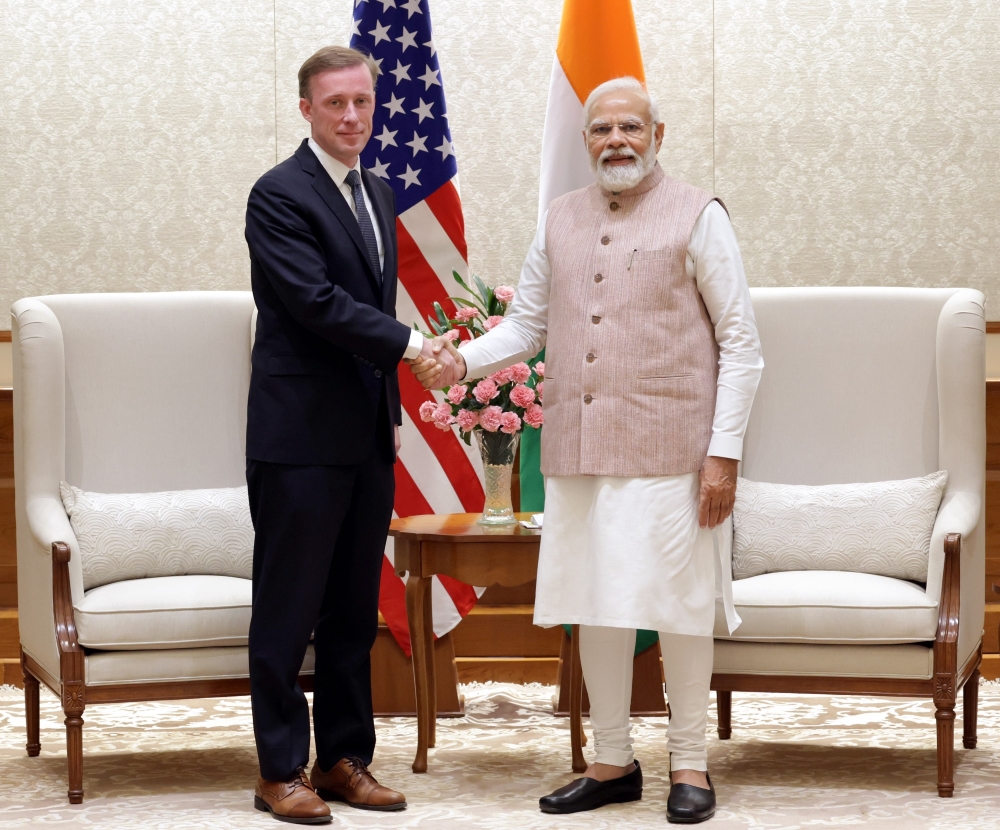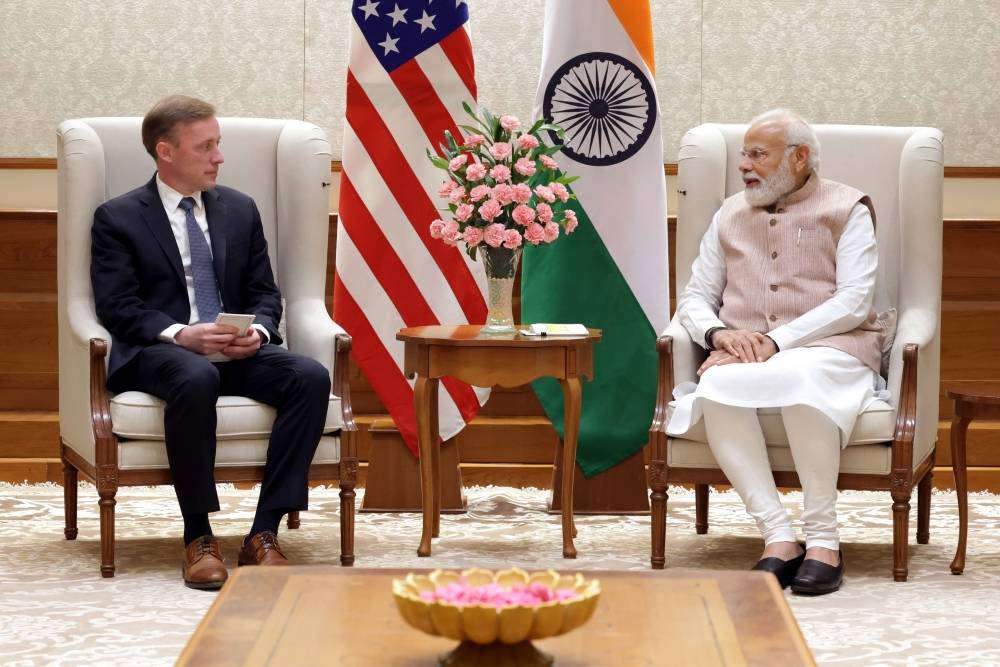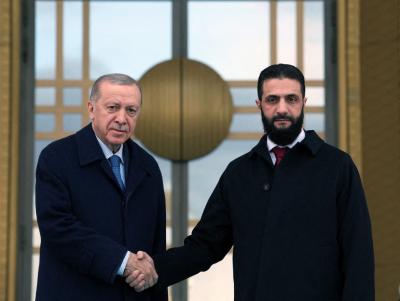India, a country that courageously shifted its historical position as a non-aligned state, is now more than ever forging close ties with the United States, thereby breaking decades of dependence on Moscow, particularly in the realm of its military arsenal.
The question persistently arises: Can a South Asian state truly adopt a hostile stance towards the power of China? This is an inquiry that deserves careful examination.
India, a country that courageously shifted its historical position as a non-aligned state, is now more than ever forging close ties with the United States, thereby breaking decades of dependence on Moscow, particularly in the realm of its military arsenal.
Currently, New Delhi is seriously questioning its reliance on Russia as a major power, as its global strategic position experiences noticeable weakening. This shift comes as Beijing sporadically maintains tensions with India along their Himalayan border.
However, the crucial question that arises is as follows: Can Washington seize this opportunity to significantly strengthen its partnership with India in all domains, including technological cooperation, trade, and strategy encompassing defense, clean energy, and medical supply chains? It is important to emphasize that this partnership explicitly excludes any form of "military alliance against China."
The United States, following in India's footsteps, fervently seeks a similar opportunity. As Indian Prime Minister Narendra Modi approaches his visit to Washington this week, alongside the visit of U.S. National Security Advisor Jake Sullivan to New Delhi for a two-day duration, a true diplomatic frenzy has taken hold of the Biden administration. Indeed, U.S. Secretary of State Antony Blinken and Secretary of Commerce Gina Raimondo plan to speak at the annual India Ideas Summit organized by the U.S.-India Business Council. This meeting aims to develop a roadmap for enhancing economic relations between the two countries.

In a separate context, U.S. Secretary of Defense Lloyd Austin recently visited New Delhi to finalize the roadmap for military cooperation between the United States and India. The objective was to reach a detailed agreement on accelerating technological cooperation and joint manufacturing in strategic areas such as aerial combat, ground transportation systems, intelligence, surveillance, reconnaissance, ammunition, and submarine operations. Among the significant points, the final details were settled for the agreement with General Electric on producing engines for the Indian Tejas MK2 fighter aircraft, and potentially engines for fifth-generation fighter aircraft. This step holds crucial importance in strengthening the defense partnership and advancing the development of relations between the United States and India.
However, beyond these developments, it is the geopolitical changes that play a major role in the realignment process between these two global powers. During the Cold War, India held a leadership position within the non-aligned movement, an informal coalition of countries officially not aligning with either the United States or the Soviet Union in the global conflict. India was seen more as an "ally" due to its left-leaning political leanings following the British colonial period, and its support for the Soviet Union was a notable consequence. Until now, this has translated into India importing over 60% of its military equipment from Russia. However, over the past three decades, India has sought to diversify its arms purchases by turning to various Western powers.
Geopolitical transformations at regional and global scales have also had a significant impact on India. In particular, the deteriorating relations between the United States and Pakistan, as well as the persistent political and economic crisis in Islamabad, have pushed the country to the brink of default. These factors contribute to redefining the strategic landscape and have implications for India.
With the threat from Pakistan diminishing and persistent provocations from Beijing along the Line of Actual Control, the northern borders with China have become more unstable, compromising regional security. This development has shifted the assessment of threats for India, which now realizes it can no longer rely on Moscow as it did in the past, especially after the Russian campaign in Ukraine failed.
From the U.S. perspective, the convergence of a "weakened" Russia and an "assertive" China facilitates a long-held aspiration in Washington: a "strategic relationship" with New Delhi.
Until recently, India sought to strengthen ties with the United States while maintaining a balance with its traditional partner, Russia. Despite international sanctions, New Delhi continued to collaborate with Moscow. However, it is clear that India is now aware of the need to turn to more reliable partners to develop its systems, particularly in the military realm. As the world's fifth-largest economy and with a population that surpasses, or even already exceeds, that of China, India is convinced that it must continue its growth and enhance its relations with the United States, especially in the economic sphere.
These developments raise two fundamental questions.
Firstly, to what extent can the United States leverage the development of economic relations with India to reduce China's influence as the world's leading industrial power? Secondly, how will Russia react to these changes on the new global stage and to American attempts to encircle it?
Regarding the first question, it is undeniable that New Delhi will benefit from strengthening this relationship, but it will depend on India's ability to ensure its own political stability and implement major economic reforms capable of attracting more foreign investments.
As for the response to the second question, it will depend on the evolution of the situation in Ukraine, whether through open conflict or settlement negotiations.
 French
French















